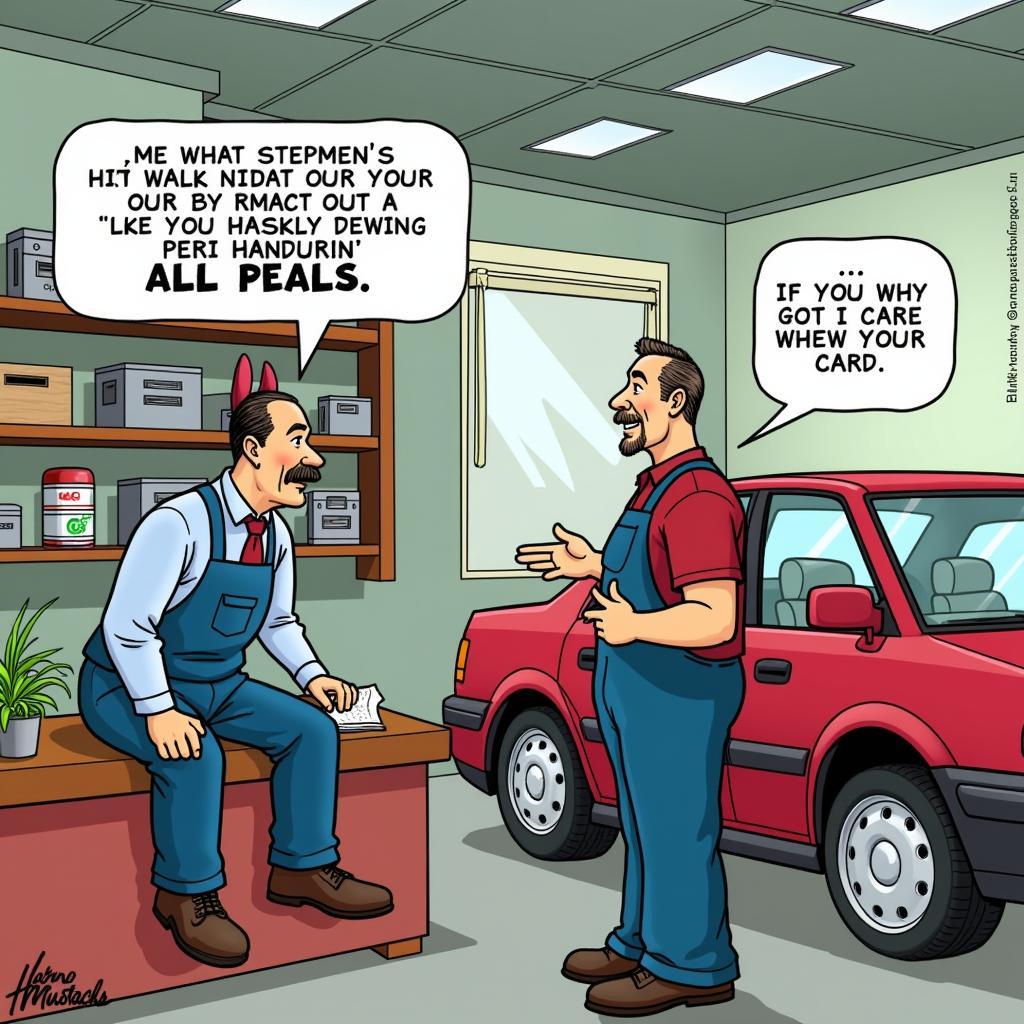Trading in a car with problems is absolutely possible, though it does affect the process. Understanding your options and how to navigate them is crucial to getting the best possible outcome. Whether you’re facing persistent mechanical issues, electrical gremlins, or simply the aftermath of an accident, this guide will help you understand the ins and outs of trading in a problematic car.
Similar to car ignition starter problem, dealing with a problematic car can be a frustrating experience. Many car owners find themselves asking, “Can You Turn In A Car If It Has Problems?” The answer is a resounding yes, but the process requires careful consideration and strategic planning. Let’s delve into the various aspects of trading in a vehicle with issues, from assessing the damage to negotiating a fair deal.
Understanding Your Options When Trading in a Car with Problems
You have several options when it comes to trading in a car with problems. Each comes with its own set of advantages and disadvantages.
Selling to a Private Buyer
Selling privately can potentially yield a higher return than trading it in to a dealership, but it also requires more effort. You’ll be responsible for advertising, showing the car, and negotiating the price. Be transparent about the issues to avoid future complications. This option might be best if the problems are relatively minor and easily fixable.
Trading in to a Dealership
Dealerships often accept trade-ins regardless of their condition, as they can either resell them at auction or use them for parts. This offers a hassle-free way to get rid of your problematic car, but you’ll likely receive a lower trade-in value. This is a good option if you prioritize convenience and speed.
Selling to a Junkyard or Salvage Yard
If your car has significant damage or extensive mechanical issues, a junkyard or salvage yard might be your best bet. They’ll purchase your car for its scrap metal value, which can be surprisingly beneficial if the repairs would cost more than the car is worth.
 Trading in a Damaged Car at a Dealership
Trading in a Damaged Car at a Dealership
Assessing the Damage and Determining the Car’s Value
Before you approach a dealership or a private buyer, it’s essential to assess the extent of the damage and determine your car’s value.
Getting a Professional Inspection
A professional inspection can provide a detailed report of the car’s condition, including the cost of repairs. This information will be helpful when negotiating the trade-in value. Remember, transparency is key when dealing with a car that has problems.
Researching the Market Value
Use online resources like Kelley Blue Book or Edmunds to determine the market value of your car in its current condition. This will give you a realistic expectation of what you can expect to receive.
Factoring in Repair Costs
Consider the cost of repairs when determining your car’s value. If the repairs are extensive, it might be more cost-effective to trade the car in as is, even if you receive a lower trade-in value.
 Mechanic Inspecting a Car Engine for Problems
Mechanic Inspecting a Car Engine for Problems
Just like the complexities discussed in problems starting car from cold start, understanding your car’s issues is vital. “Being upfront about the problems is always the best approach,” advises John Smith, Automotive Engineer at Auto Experts Inc. “It builds trust and helps manage expectations.”
Negotiating a Fair Trade-In Value
Negotiating the trade-in value of a car with problems requires a strategic approach. Be prepared to discuss the issues openly and honestly.
Highlighting the Positives
While being transparent about the problems is important, don’t forget to highlight the positives of your car. This might include recent maintenance, new tires, or desirable features.
Being Realistic with Your Expectations
Understand that you’ll likely receive a lower trade-in value than you would for a car in perfect condition. Researching the market value and factoring in repair costs will help you set realistic expectations.
Being Prepared to Walk Away
Don’t be afraid to walk away if you’re not satisfied with the offer. You might be able to find a better deal elsewhere.
 Customer Negotiating Car Trade-in Value at Dealership
Customer Negotiating Car Trade-in Value at Dealership
Similar to infinity 80 problems turning the car, negotiating requires a balanced approach. “Don’t be afraid to negotiate,” says Jane Doe, Senior Mechanic at Ace Auto Repair. “Knowing your car’s worth and being prepared can significantly impact the outcome.”
Conclusion: Making the Right Decision for Your Situation
Trading in a car with problems is a viable option. By understanding your options, assessing the damage, and negotiating strategically, you can get the best possible outcome. Remember to be transparent, realistic, and prepared to walk away. If you need expert advice or assistance, connect with us at AutoTipPro. We’re here to help.
Our Contact Information:
Phone: +1 (641) 206-8880
Office: 500 N St Mary’s St, San Antonio, TX 78205, United States
 Happy Customer with New Car after Trade-in
Happy Customer with New Car after Trade-in
As car engine heat up problem can sometimes lead to further complications, addressing any issues promptly is essential. Remember, making an informed decision is crucial when trading in a car with problems.
This also applies when you encounter scenarios similar to 11133601 anki kourai drive car turning on problems.





Leave a Reply